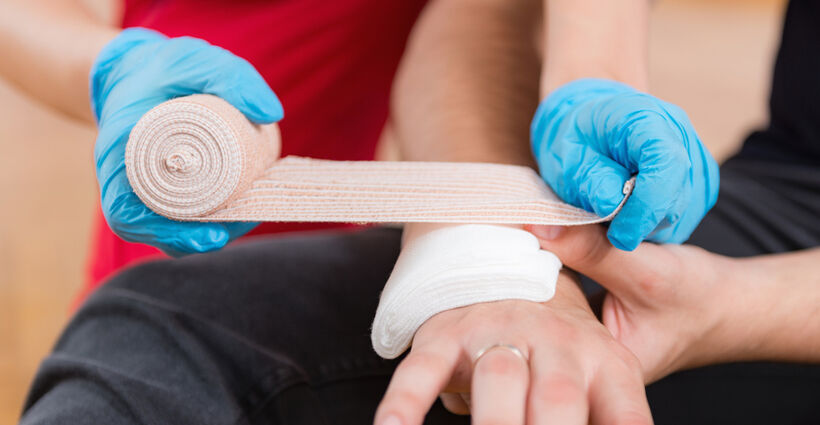First aid is an essential skill that everyone should know, especially in schools where children spend a significant part of their day. Accidents can happen anytime, and it is crucial to be prepared to respond to emergencies promptly and effectively. First aid training can help create a safer learning environment for students and staff, reducing the risk of serious injury or illness. In this essay, we will discuss the importance of first aid training in schools and how it can be implemented effectively.
Why First Aid Training is Important in Schools
Injuries and illnesses can occur in schools due to various reasons such as accidents during physical education classes, playground injuries, allergic reactions, and medical conditions. According to a study by the National Center for Education Statistics, in 2019, there were over 1.1 million injuries and illnesses in public schools in the United States alone. This highlights the need for first aid training in schools to ensure that students and staff are prepared to respond to emergencies.
First aid training can help schools in several ways:
1. Preventing further injury: In the absence of proper first aid training, injuries can worsen, leading to long-term health problems, disabilities, and even death. With first aid training, school staff can provide immediate care, reducing the risk of further injury.
2. Reducing liability: Schools have a legal obligation to provide a safe environment for students. First aid training can help schools fulfill this obligation by equipping staff with the necessary skills to respond to emergencies.
3. Promoting safety culture: First aid training can promote a safety culture in schools, encouraging students and staff to be vigilant and proactive in preventing accidents and responding to emergencies.
4. Building confidence: First aid training can boost the confidence of school staff, enabling them to respond effectively in emergency situations and provide appropriate care until professional help arrives.
How to Implement First Aid Training in Schools
Implementing first aid training in schools requires a structured approach. Here are some steps to consider:
1. Identify the needs of the school: Assess the specific first aid needs of the school, considering factors such as the age of students, the size of the school, and the likelihood of accidents or illnesses.
2. Choose a training provider: Select a reputable first aid training provider that offers courses tailored to the needs of schools. Ensure that the provider is accredited by a recognized organization, such as the American Red Cross or the American Heart Association.
3. Train a core group of staff: Train a core group of school staff, including teachers, administrators, and support staff, in basic first aid skills, such as cardiopulmonary resuscitation (CPR), bleeding control, and shock management.
4. Provide ongoing training: Offer regular first aid training sessions to ensure that staff members are up-to-date with the latest techniques and guidelines.
5. Involve students: Incorporate first aid training into the curriculum, teaching students basic first aid skills, such as how to call 911, how to stop bleeding, and how to perform CPR.
6. Develop an emergency response plan: Create an emergency response plan that outlines procedures for responding to various types of emergencies, such as natural disasters, fires, and medical emergencies.
7. Equip the school with first aid supplies: Ensure that the school has a well-stocked first aid kit and that staff members know how to use the supplies effectively.
Challenges in Implementing First Aid Training in Schools
Implementing first aid training in schools can face several challenges, including:
1. Limited resources: Schools may struggle to allocate resources for first aid training, especially in low-income areas.
2. Lack of time: Schools may have tight schedules, making it challenging to fit in first aid training sessions.
3. Limited access to training providers: Rural schools may have limited access to first aid training providers, making it difficult to arrange training sessions.
4. Resistance to change: Some school staff may be resistant to change, viewing first aid training as an additional burden or unnecessary expense.
Overcoming these challenges requires creative solutions, such as:
1. Seeking grants or funding: Schools can seek grants or funding from organizations or government agencies to cover the costs of first aid training.
2. Collaborating with local organizations: Schools can partner with local organizations, such as hospitals or community centers, to access first aid training resources.
3. Online training: Schools can utilize online first aid training courses to overcome the challenge of limited access to training providers.
4. Integrating first aid training into existing programs: Schools can incorporate first aid training into existing programs, such as health education or physical education classes.
First aid training is an essential component of a safe and healthy learning environment in schools. By implementing first aid training, schools can reduce the risk of serious injury or illness, promote a safety culture, and build confidence among school staff. While challenges may exist, creative solutions can help overcome these obstacles, ensuring that schools can provide the best possible care for their students and staff.
In conclusion, first aid training is a critical investment in the safety and well-being of school communities. By prioritizing first aid training, schools can create a safer learning environment, better equipping staff to respond to emergencies and protect the health and well-being of their students.




